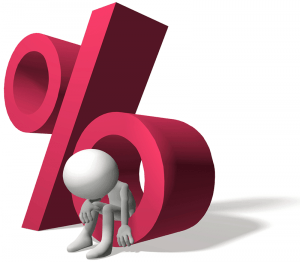Well-planned movies become debacles. As do game strategies in chess. The dressing room strategies of the Indian cricket team always seem to be in the danger of backfiring. Can’t then your tax planning strategy?
Here are 7 surefire indicators that it has.
You find yourself struggling to use up the Section 80 limit
People tend to put off their tax-saving investments until the last minute. Typically, in the last few months of the financial year, they find themselves ‘saddled’ with the task of using up their full quota of tax exemptions. If you find yourself in such situation, you know you belong in the Indian cricket dressing room.
Your overall investments are limited to only Section 80C exemptions
This is probably your biggest error. Only exhausting the deduction limit under the Section 80C of the Income Tax Act is like covering only your head when it rains. The Section 80C limit remained at Rs. 1 lakh from 2005 to 2014, when it was increased by Rs. 50,000.
During those nine years, the value of Rs. 1 lakh has shrunk by 45% at an average inflation rate of 7%. In short, you have planted all your seeds in one garden, and neglected other options with more fertile ground.
You buy only endowment policies for tax saving
It’s not uncommon to find investors opting only for endowment or money-back policies. There are two reasons for it.
Firstly, for many, investment decisions are made by their LIC agent who would invariably get them to buy a money-back or an endowment plan.
Secondly, endowment plans fetch very high commissions, while, as investors you may not even be aware that these instruments earn a paltry 5-6% return annually. Given the high inflation in the last few years, it is quite likely that you have been earning negative real returns (return from investments minus inflation).
Worse, there are no easy exits from these schemes unless you are ready to surrender them at 50-70% losses. Usually, it takes 10-12 years for a 20-year endowment plan to ‘break-even’. This is like sending out a test batsman in the last 5 overs of a match when the asking rate is over 12 per over.
Your portfolio is full of fixed income instruments
A portfolio laden with only fixed income instruments such as Public Provident Fund (PPF), Employee Provident Fund (EPF), National Savings Certificate (NSC) and tax-saving fixed deposits may be detrimental to your overall portfolio.
The return from such instruments would normally be closer to inflation. Besides, interest earned from some of these popular savings schemes such as NSC, tax-saving FDs and Senior Citizen Savings Schemes (SCSS) are taxable.
This is like packing your T-20 squad with only test batsman.
Over the long term, you need investment avenues that beat inflation by a fair margin. Equity is the only asset class that has shown the ability to do that over a very long period.
Your tax-saving investments are out of sync with overall portfolio
The choice of tax-saving instruments should be based on the overall portfolio, and they should not be seen as separate from non-tax saving instruments. If a 35-year-old should ideally have 70-80% of her portfolio in equities, but has debt-heavy portfolio, she must choose her tax-saving investments in such a way to tilt the balance in favor of equities instead of putting money in FDs, PPF or NSC.
You overstate future tax-saving investments
Usually, your employer asks you to declare at the beginning of the financial year how much tax-saving investments you would make during the year. This is to calculate the amount of tax they need to deduct at source from your monthly your salary.
Sometimes you tick all the options, indicating that you would exhaust the deduction limits. However, you invest only a fraction of the declared amount during the year. This could lead to higher tax deduction during the last 2-3 months of the financial year, creating financial strain in those days.
You have high exposure to instruments where returns are taxable
Interest from bank FDs, NSCs, bonds and debentures are taxable. If a big chunk of your portfolio is invested in such instruments, 10-30% of your earnings from these investments would go in paying taxes.
Your portfolio should have moderate-to-high exposure to products such as stocks, equity mutual funds, PPF, tax-free bonds, etc where returns (long-term capital gains, dividends in case of equities) are exempt from tax.
Remember: willful non-disclosure of income such as dividends from debt funds, capital gains, interest on debentures, bonds etc are considered par for the course when it comes to tax planning. However, given that the tracking mechanism of the Income Tax department is getting better, such tactics may land you in trouble and you may be sent back to the dressing room.
There’s only one way of staying out there in the middle when it comes to tax saving, and that is to plan right and invest smart.
So, what kind of player are you – one who revels in the middle or broods in the dressing room?
